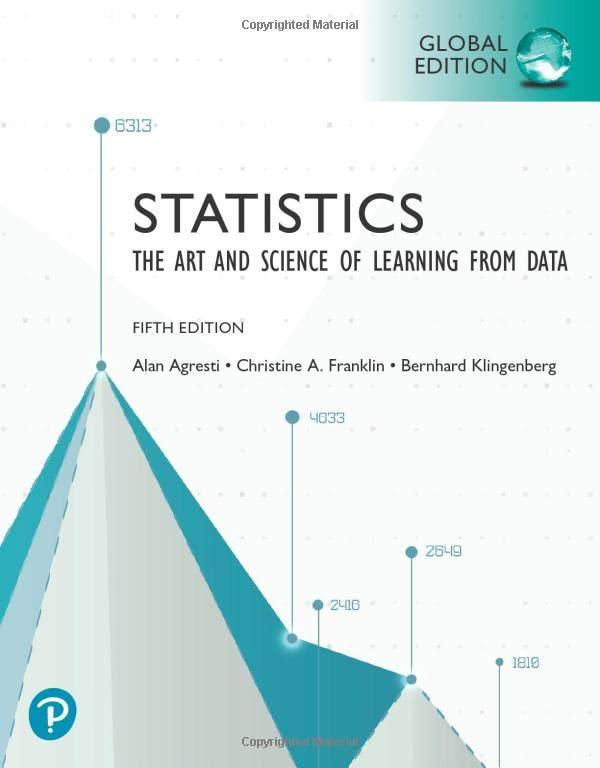To evaluate how eyewitness testimonies may affect jurors in reaching a verdict, researchers recorded two mock murder
Question:
To evaluate how eyewitness testimonies may affect jurors in reaching a verdict, researchers recorded two mock murder trials: one with weak and one with strong eyewitness testimonies.
They then asked jurors to come to a verdict of either guilty or not guilty based on the version of the recording they were shown. (The data file for this experiment, which includes additional variables, is on the book’s website under Eyewitness Testimony.) You can enter the counts from the contingency table below in the Association Between Two Categorical Variables app to answer the following questions.

a. How many jurors were shown the recording with the strong and how many jurors were shown the recording with the weak testimony?
b. What is the response variable, and what is the explanatory variable?
c. Find the conditional proportions (convert them to percentages) of a guilty verdict given eyewitness testimony. Interpret and sketch a plot comparing the conditional proportions.
d. Find the difference of the conditional proportions and interpret this difference in context.
e. Is it true that the proportion of jurors delivering a guilty verdict is about 6% higher for those jurors who watched the recording with the strong testimony?
Explain.
Step by Step Answer:

Statistics The Art And Science Of Learning From Data
ISBN: 9781292444765
5th Global Edition
Authors: Alan Agresti, Christine A. Franklin, Bernhard Klingenberg




